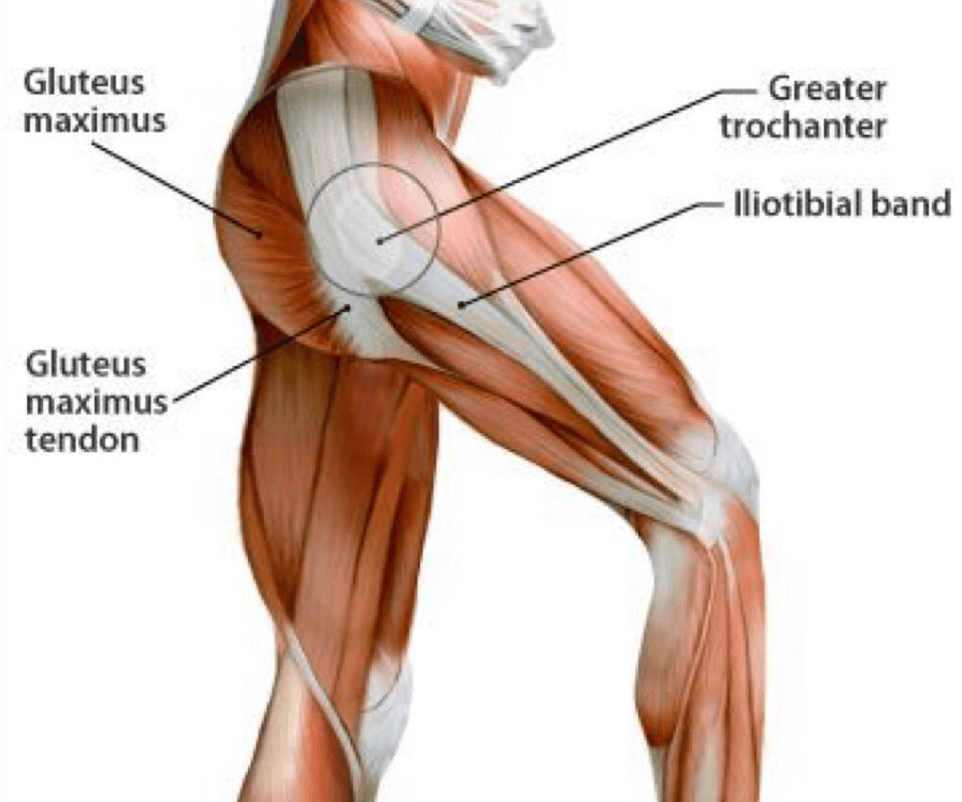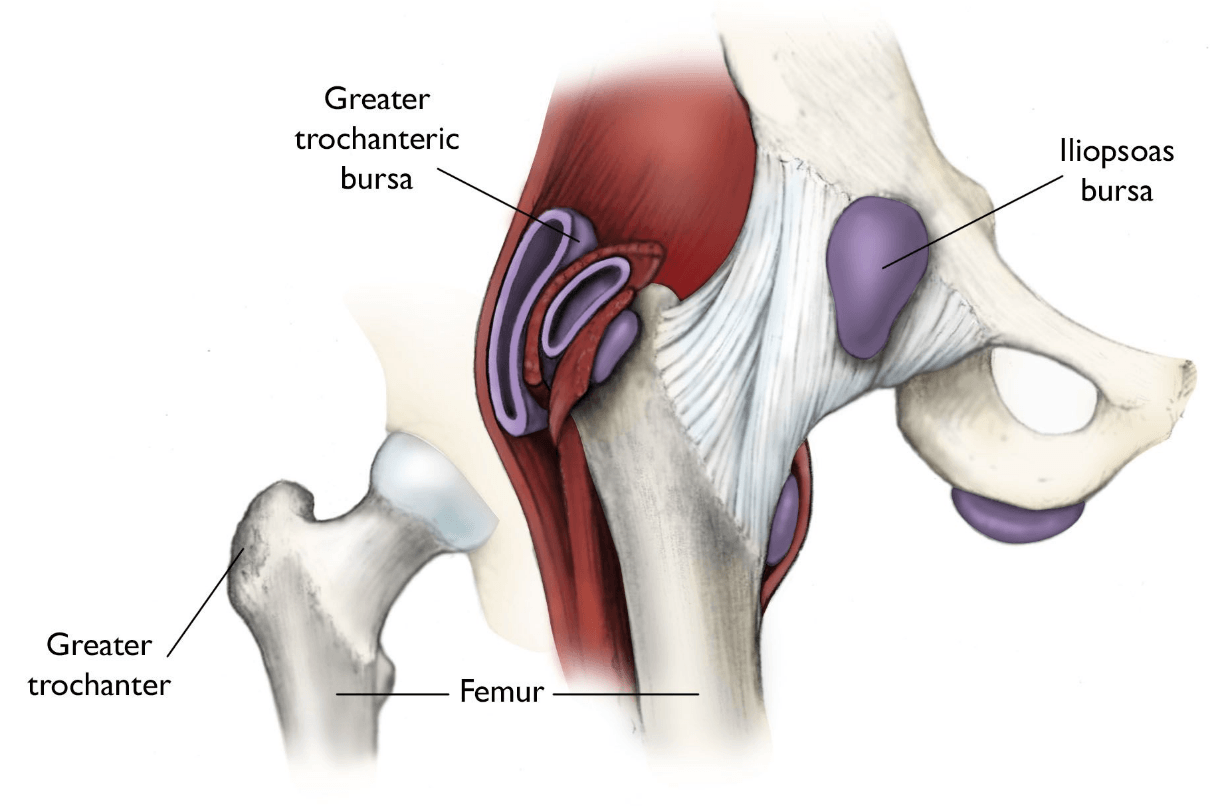Hip Bursitis
A bursa is a structure that allows soft tissues (ligaments, tendons, fascia) to move smoothly over bone without rubbing, such as over the elbows and the front of the knees. Think of them as a small plastic bag filled with oil, one side is in contact with the bone and the other in contact with the soft tissue.
There are several bursae around the hip. The most common bursa that causes problems is the greater trochanteric bursa. The greater trochanter (GT) is the top of the femur, or thigh bone and can be felt as a bump on the outside of the top of your thigh. Over the GT moves the Ilio-tibial band (ITB), a thick fibrous layer of tissue connecting the top of the thigh, hip and groin area to the outside of the knee. As you walk or move the hip, the fascia moves over the GT. The trochanteric bursa prevents rubbing and inflammation of the tissue.
Hip Bursitis
A bursa is a structure that allows soft tissues (ligaments, tendons, fascia) to move smoothly over bone without rubbing, such as over the elbows and the front of the knees. Think of them as a small plastic bag filled with oil, one side is in contact with the bone and the other in contact with the soft tissue.

There are several bursae around the hip. The most common bursa that causes problems is the greater trochanteric bursa. The greater trochanter (GT) is the top of the femur, or thigh bone and can be felt as a bump on the outside of the top of your thigh. Over the GT moves the Ilio-tibial band (ITB), a thick fibrous layer of tissue connecting the top of the thigh, hip and groin area to the outside of the knee. As you walk or move the hip, the fascia moves over the GT. The trochanteric bursa prevents rubbing and inflammation of the tissue.

The bursa can become inflamed. When this happens, you can feel pain on the outside of the hip, often felt at night lying on the affected side. It can be an ache or a sharp pain and may cause a limp.
Treatment is usually non-operative. Very rarely, in chronic cases not responding to any other treatment, surgery is required.
The bursa can become inflamed. When this happens, you can feel pain on the outside of the hip, often felt at night lying on the affected side. It can be an ache or a sharp pain and may cause a limp.
Treatment is usually non-operative. Very rarely, in chronic cases not responding to any other treatment, surgery is required.
